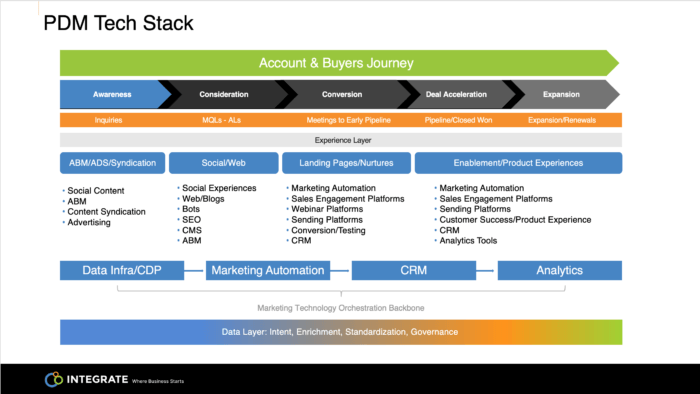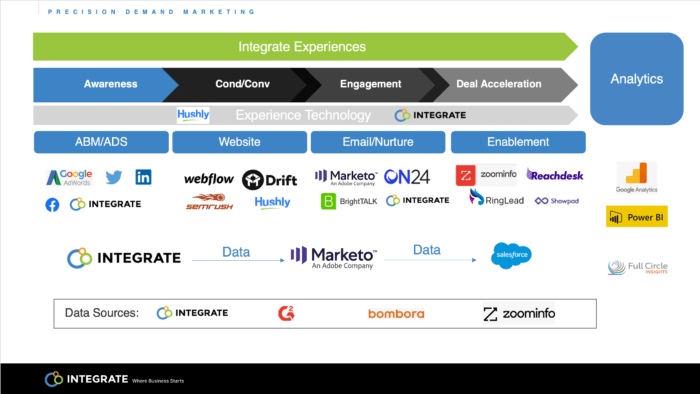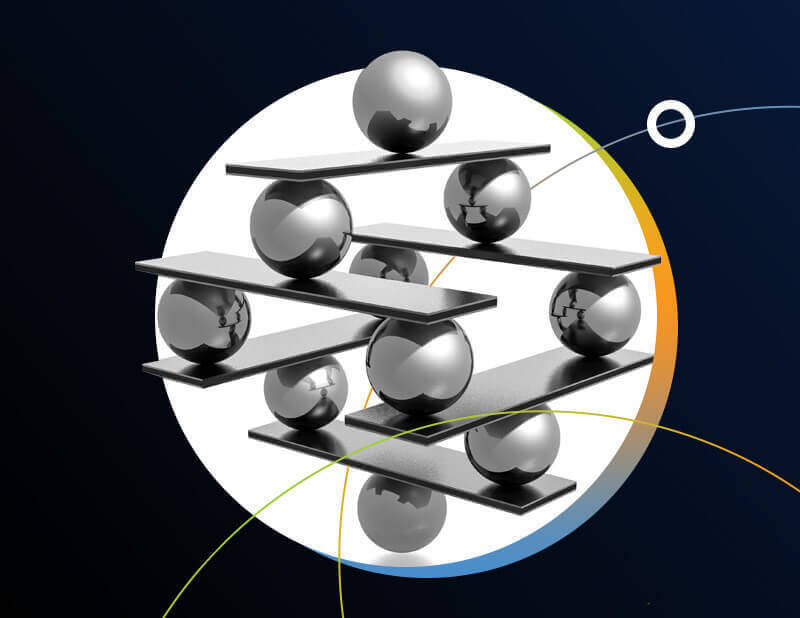MOPs Perspective: What’s the Ideal MarTech Stack?
Today, it’s an increasingly complex B2B world out there. More and more, our buyers are existing in a digital world and doing their own research on their own terms. Add to that recent Forrester research reporting that not only has the B2B buying committee grown from 17 interactions in 2019 to 27 in 2021, but c-suite officers and finance have also joined the ranks of the B2B buying group. This means that in this new world, the old B2B integrated marketing rules no longer apply. What matters now is that there is only one process, and that’s the buyer’s process.
These buyer-driven shifts change how we think about everything from our team structures to our martech stacks. In fact, according to recent research we conducted with Heinz Marketing, nearly 60% of B2B marketers are not entirely confident that their marketing strategy, technology and team structure effectively supports their marketing goals. This research underscores that what we need today is to adopt a buyer-driven, omnichannel Precision Demand Marketing approach where we optimize connected strategies, organizational structures, and integrated technology.
For MOPs teams, if you’re like me, your mind has probably gone straight to thinking about your martech stack in this new B2B Precision Demand Marketing world. After all, your martech stack is what streamlines your day-to-day processes and is at the core of a high-performing B2B marketing team. So, how do we optimize our existing tech stacks and what are the important considerations?
I like to think of my Precision Demand Marketing tech stack in terms of data, orchestration, and experience layers.
The Data Layer
The data layer is where your data and reporting reside. This includes intent data, enrichment, standardization, and governance of your data. Getting your data right and ensuring marketable, connected data is foundational to the success of your demand campaigns. This layer allows you to start thinking about your buyer’s journeys and focus on two critical objects: (1) the account and (2) the lead/contact object.
In our system, all work is done on the account and contact. We automate 70% of the conversion of leads to contacts and focus on making sure that we have the right data on the account and contact. This data could be demographic data or journey data, which allows us to control what happens to the account or buyer in their journey. I aim for an 85% marketable database, which means that 85% of my accounts and contacts have the right data populated in the right fields. We then constantly monitor these fields for both data and data quality.
The Orchestration Layer
The next layer is the orchestration layer where you’ll leverage quality data to feed into your martech orchestration backbone. This includes your data infrastructure or CDP, marketing automation, CRM, and analytics tools. It is this layer that handles the routing, converting, alerting, segmenting, scoring, standardizing, identifying and cleaning of the data.
This layer allows the experience layer to read from and deliver the right content to the right person in the right channel. It is this layer that knows what accounts are in market and allows the experience layer to know what ads to surround them with. This orchestration layer helps to identify which account moved from researching to engaged and triggers actions for the SDR team to build out the account. It also alerts the sales team as to what is going on at the account and contact level. And it understands where an account or person is in their journey and allows the experience layer to update accordingly.
The Experience Layer
The orchestration layer then feeds into the experience layer, which is where you’ll activate your demand campaigns across channels. This is where you begin to build omnichannel journeys.
Imagine this: leading up to an event, targeted messages are fed across your social, email, website and 3rd party programs meeting your buyers in the channels where they consume content. After registration but before the event, emails keep the buyers informed of what to expect and also build excitement for the event. At the event, your salesperson is aware of who registered and their interest, and then when that person comes by the booth and they get scanned, they are instantly provided additional detail via email on what was discussed. Similarly, the account that the person works for is added to 3rd party programs to round out the buying unit within that account as well as surrounded by the appropriate advertising. Finally, after the event, the people and accounts are followed up through multiple channels, advertising, email, targeted 3rd party campaigns to continue the conversation in a meaningful manner. That is a precise, connected, omnichannel buyer-driven experience!

In practice, this is what my martech stack looks like:

With over 8,000 martech solutions out there, it’s likely that no two tech stacks are exactly the same. In today’s buyer-driven B2B world, we need to meet our buyers where they are, whether it’s through multichannel account-based marketing (ABM) campaigns, ads, long-form content via lead providers, social campaigns, or through digital and physical events. But what’s important is that you build a solution that reduces the silos, aligns the teams, and allows for the best user experience. This approach also helps you identify where your gaps are within your current technology stack and helps to build a technology roadmap and prevent you from chasing the next shiny object.
Look for solutions that will help you connect your marketing efforts across channels, respond to a buyer’s needs and interests, and learn with every interaction. It’s time we act with precision and engage the right buyers with the right messages at the right times.
If you’d like to learn more, check out our on-demand Integrate Live where my colleague, Justin Eisner, VP Technical Consulting and I presented on the ideal Precision Demand Marketing tech stack.








